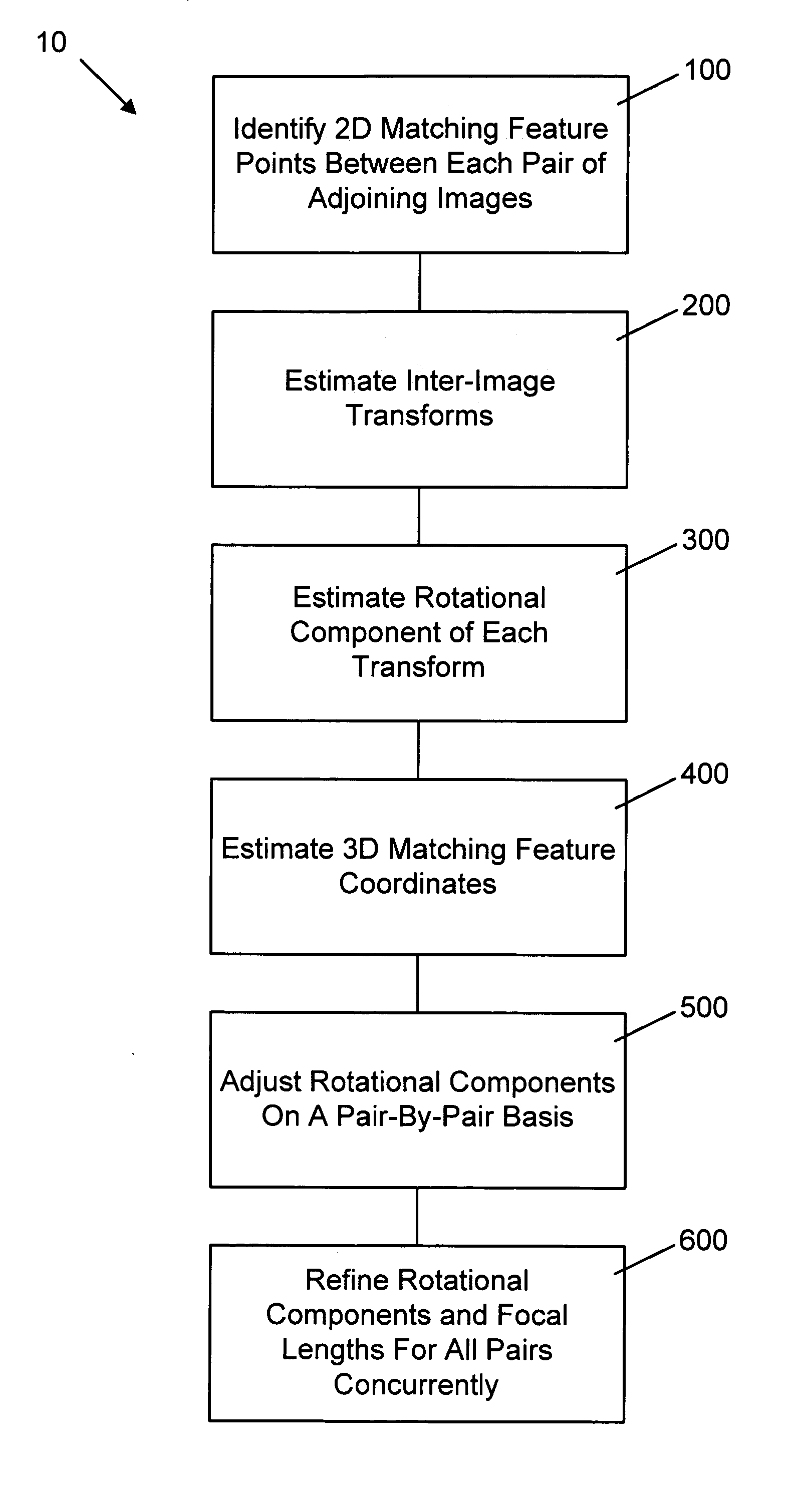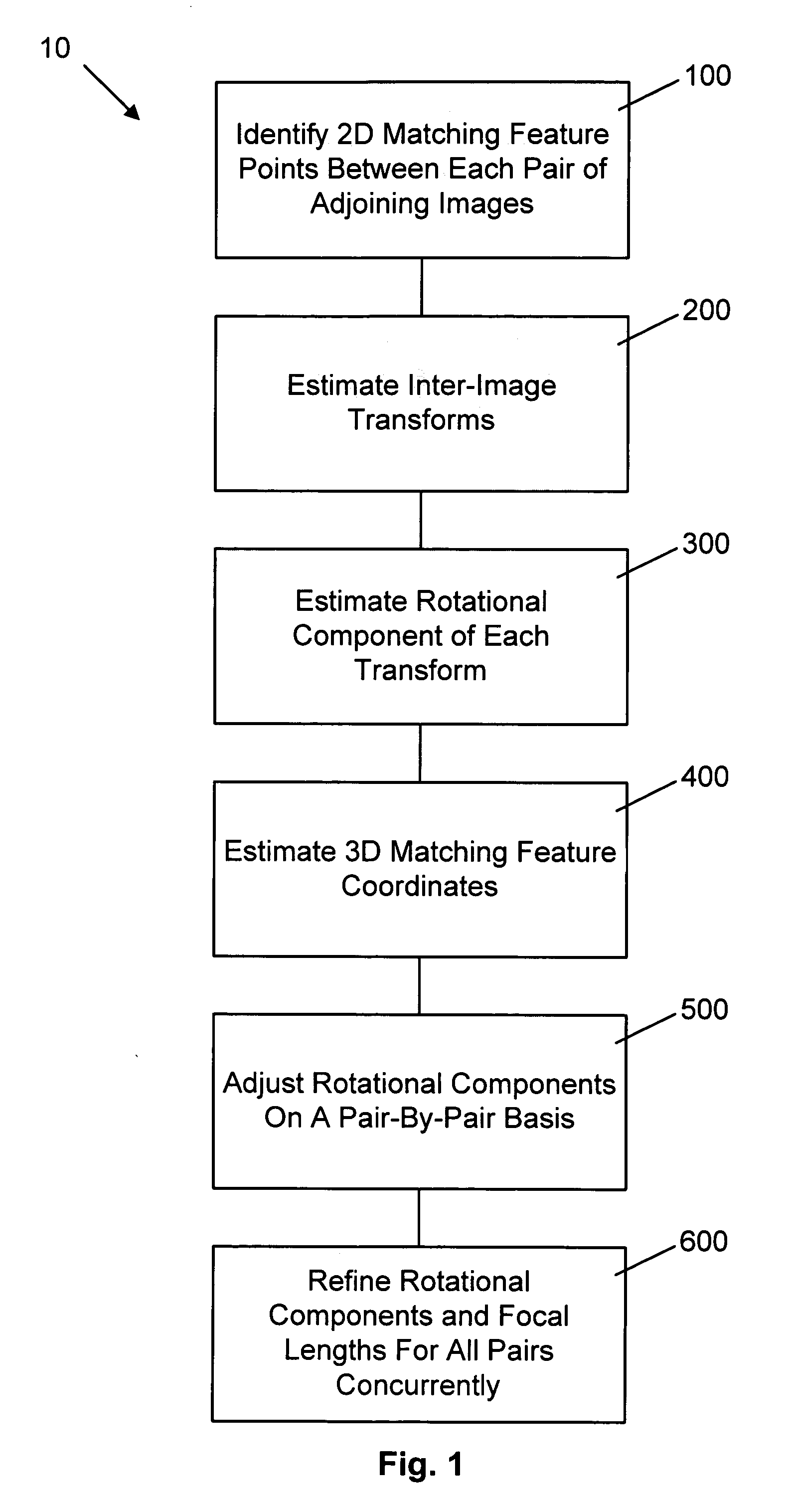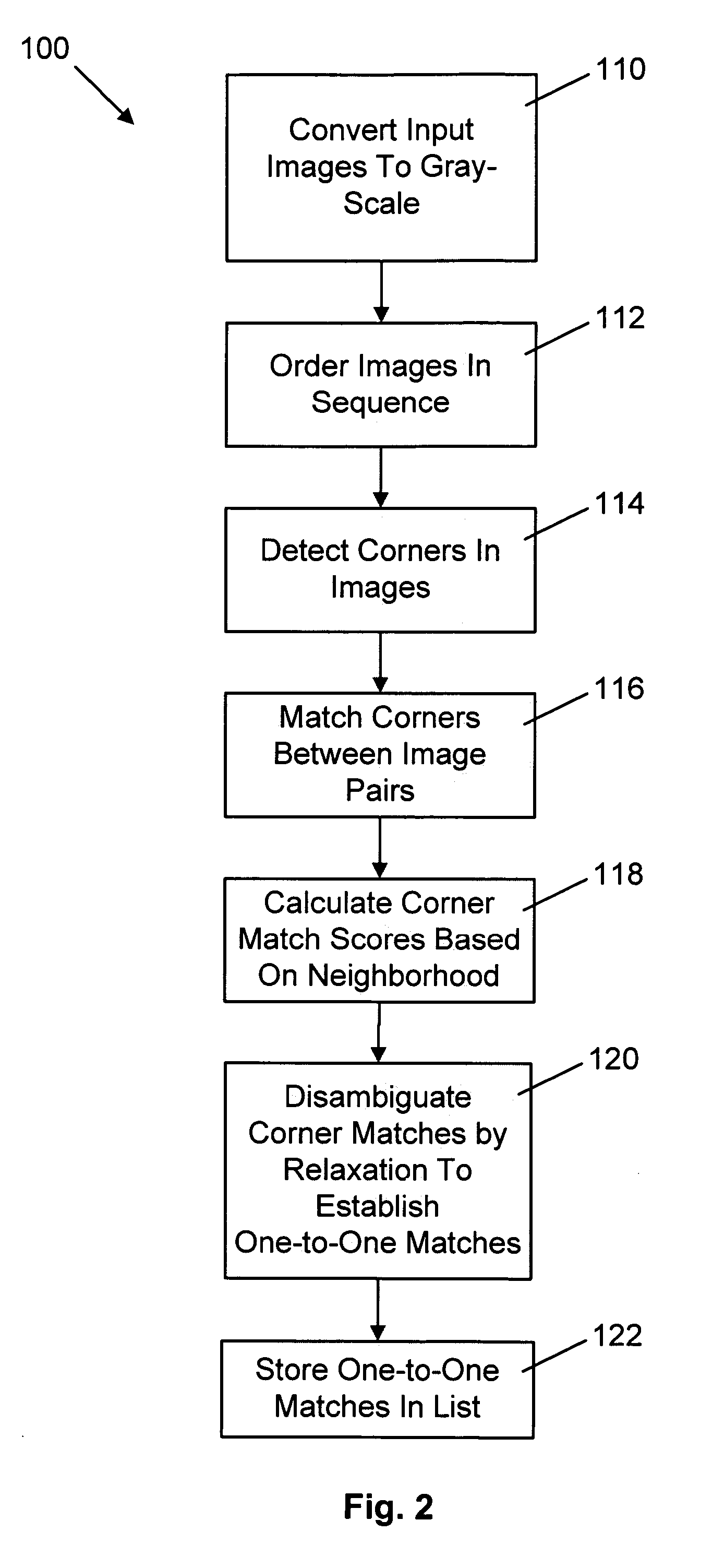Method for determining camera position from two-dimensional images that form a panorama
a two-dimensional image and panorama technology, applied in the field of image processing, can solve the problems of inability to capture the entire scene of a digital image, loss of three-dimensional information, and inability to simple image stitching in this instance, so as to save additional processing resources and time, avoid slow convergence and getting stuck in local minima
- Summary
- Abstract
- Description
- Claims
- Application Information
AI Technical Summary
Benefits of technology
Problems solved by technology
Method used
Image
Examples
Embodiment Construction
[0053]In the following description, embodiments of a method, apparatus and computer program for estimating camera position information from a series of source images that form a panorama are provided. During camera position estimation, a transform between adjoining image pairs in the series based on common features within the adjoining image pairs is estimated. A rotational component for each transform and three-dimensional coordinates for the common features are determined. Each of the rotational components is adjusted to reduce errors between corresponding ones of the coordinates in adjoining image pairs. Focal lengths are then calculated based on the adjusted rotational components.
[0054]The method and apparatus may be embodied in a software application including computer executable instructions executed by a processing unit such as a personal computer or other computing system environment. The software application may run as a stand-alone digital image editing tool or may be inco...
PUM
 Login to View More
Login to View More Abstract
Description
Claims
Application Information
 Login to View More
Login to View More - R&D
- Intellectual Property
- Life Sciences
- Materials
- Tech Scout
- Unparalleled Data Quality
- Higher Quality Content
- 60% Fewer Hallucinations
Browse by: Latest US Patents, China's latest patents, Technical Efficacy Thesaurus, Application Domain, Technology Topic, Popular Technical Reports.
© 2025 PatSnap. All rights reserved.Legal|Privacy policy|Modern Slavery Act Transparency Statement|Sitemap|About US| Contact US: help@patsnap.com



